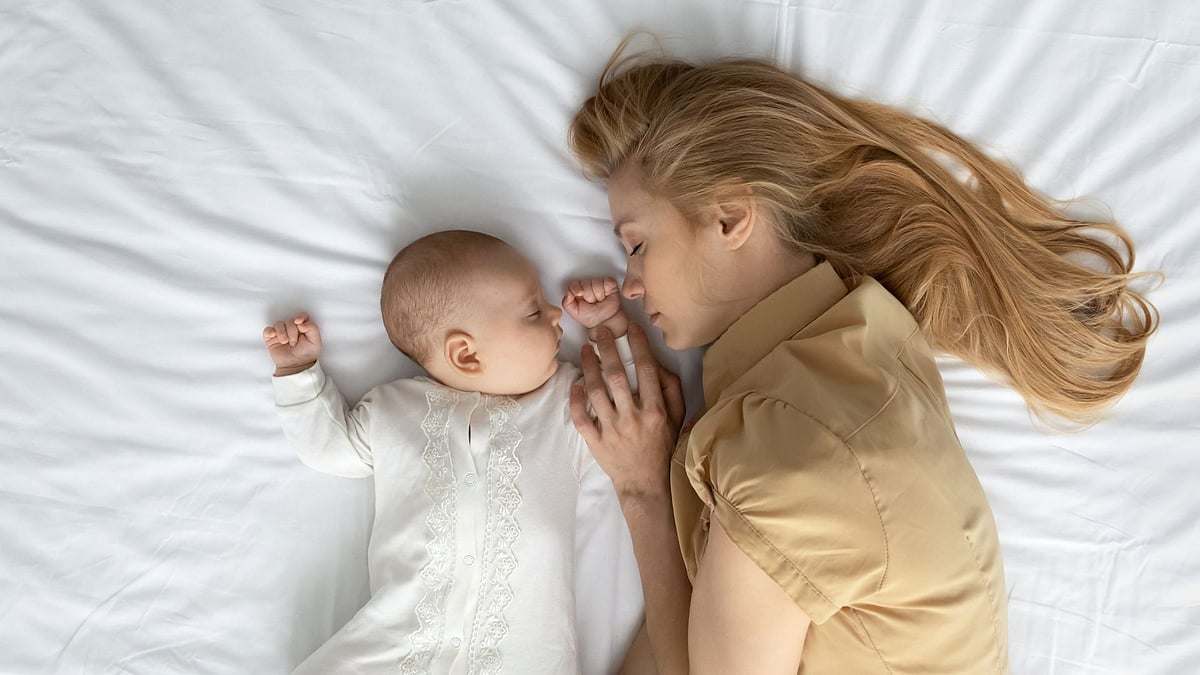A recent investigation by scientists at the University of Toronto uncovered disturbing levels of harmful substances in the bedrooms of young children. The team analyzed air samples from 25 homes with kids aged 6 months to 4 years, and what they found is troubling, over two dozen harmful chemicals, including phthalates, flame retardants, and UV filters, were detected. The air around the beds had the highest concentrations.
In a follow-up study, the researchers examined 16 brand-new children’s mattresses, confirming that they were the main source of the toxic emissions in the bedrooms.

Body heat makes it worse
To simulate a real-life sleeping environment, the team mimicked a child’s body weight and temperature on the mattresses. The result? Chemical emissions spiked significantly, in some cases increasing several-fold under these conditions.
Children are not just small adults, they are more sensitive to environmental exposures. Here’s why:
1. Their respiratory rates are up to 10 times faster, so they inhale more air (and chemicals) relative to their body weight.
2. Their skin is more permeable, and they have three times more skin surface area compared to adults.
3. Their tendency for hand-to-mouth behavior increases their intake of harmful substances.
Health risks linked to mattress chemicals
The chemicals found in the study are harmful. They’ve been associated with:
1. Neurological damage, such as reduced IQ, memory problems, learning disabilities, and behavioral issues
2. Hormonal disruption, potentially affecting development and fertility
3. Asthma and respiratory issues
4. Increased cancer risk
5. Reproductive and immune system impacts
Expert call to action
“This is a wake-up call for manufacturers and policymakers,” said Professor Miriam Diamond, one of the lead researchers, according to IANS. “Sleep is critical for early brain development, and we must ensure the environment supports that, not sabotages it.”
The researchers are urging stricter regulations, improved safety testing, and more transparency from manufacturers about what goes into children’s bedding products.

What Can Parents Do?
While regulation may take time, there are steps families can take right now to reduce risk:
1. Choose certified low-tox or organic mattresses made without flame retardants or harmful plasticisers.
2. Wash bedding and sleepwear often, this can act as a barrier and reduce surface residue.
3. Declutter the bed, limit the number of pillows, blankets, and stuffed toys, which can absorb and release chemicals over time.
4. Improve room ventilation, especially during naps and nighttime.
5. Avoid second-hand mattresses if their material composition is unknown or outdated.
Infants and toddlers spend up to 14-17 hours a day sleeping, making their bed one of the most important environments in their lives. While this research shines a light on some serious concerns, it also empowers parents and caregivers with knowledge, and the ability to create safer, healthier sleep spaces for their children.
